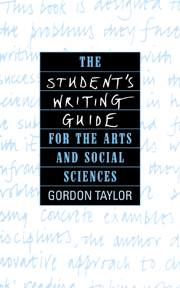2 - Sample analyses of essay topics
Published online by Cambridge University Press: 29 January 2010
Summary
French
One critic has said: ‘Truffaut is trying to establish connections between theatre and politics, between personal relationships and political involvement, between the idealism of the few and the pragmatism of the many.’
Do you think he succeeds in his aims? What verbal and visual means does he use to establish these connections?
The meanings of terms
Truffaut — a French film maker.
Idealism and pragmatism — check standard dictionary definitions of these terms as a start. For example, The Concise Oxford Dictionary has: Idealism — ‘representation of things in ideal form’; ideal — ‘answering to one's highest conception; … existing only in idea; visionary …’. Pragmatism — ‘officiousness; pedantry … doctrine that estimates any assertion solely by its practical bearing upon human interests’.
Verbal and visual means — review the course so far and references given to get an idea about the categories of (a) verbal analysis and (b) visual analysis that are appropriate. No other problems with the understanding of terms.
Relationships of meaning between terms
How many questions are being asked? There seem to be two (‘Do you think…?’ and ‘What verbal and visual means…?’). How can I reduce these to one fundamental question?
The fundamental question which requires my own evaluative answer is the first.
- Type
- Chapter
- Information
- The Student's Writing Guide for the Arts and Social Sciences , pp. 230 - 236Publisher: Cambridge University PressPrint publication year: 1989



